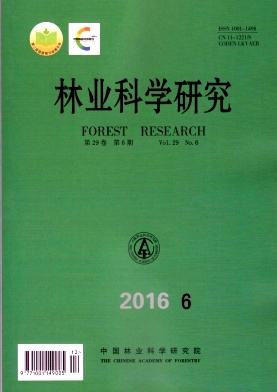|
[1]
|
Fu X W, Li C, Feng H Q, et al. Seasonal migration of Cnaphalocrocis medinalis(Lepidoptera: Crambidae) over the Bohai Sea in northern China[J]. Bulletin of Entomological Research, 2014, 104(5): 601-609. |
|
[2]
|
Justus K A, Mitchell B K. Reproductive morphology, copulation, and inter-populational variation in the diamondback moth, Plutella xylostella(L.) (Lepidoptera: Plutellidae)[J]. International Journal of Insect Morphology and Embryology, 1999, 28(3): 233-246. |
|
[3]
|
Alves L, Mancini K, Lino-Neto J, et al. Morphology of the male reproductive system and sperm ultrastructure of Leucoptera coffeella (Lepidoptera: Lyonetiidae)[J]. Acta Zoologica, 2006, 87(2): 131-139. |
|
[4]
|
Mancini K, Dolder H. Sperm morphology and arrangement along the male reproductive tract of the butterfly Euptoieta hegesia(Insecta: Lepidoptera)[J]. Invertebrate Reproduction & Development, 2003, 44(2-3): 107-117. |
|
[5]
|
孟银凤, 尚素琴, 张雅林. 橙黄豆粉蝶生殖系统形态学研究[J]. 应用昆虫学报, 2013, 50(3): 813-817.
|
|
[6]
|
Jahnke S M, Redaelli L R, Diefenbach L M G. Internal reproductive organs of Cosmoclopius nigroannulatus (Hemiptera: Reduviidae)[J]. Brazilian Journal of Biology, 2006, 66(2A): 509-512. |
|
[7]
|
Presgraves D C. Sperm heteromorphism and precedence in the stalk-eyed fly, Cyrtodiopsis whitei. University of Maryland, 1997. |
|
[8]
|
Katsuno S. Studies on eupyrene and apyrene spermatozoa in the silkworm, Bombyx mori L. (Lepidoptera: Bombycidae): I. The intratesticular behaviour of the spermatozoa at various stages from the 5th~instar to the adult[J]. Applied Entomology and Zoology, 1977, 12(2): 142-153. |
|
[9]
|
Morrow E H, Gage M J G. The evolution of sperm length in moths[J]. Proceedings of the Royal Society of London B: Biological Sciences, 2000, 267(1440): 307-313. |
|
[10]
|
Osanai M, Chen P S. A comparative study on the arginine degradation cascade for sperm maturation of Bombyx mori and Drosophila melanogaster[J]. Amino Acids, 1993, 5(3): 341-350. |
|
[11]
|
Osanai M, Kasuga H, Aigaki T. Isolations of eupyrene sperm bundles and apyrene spermatozoa from seminal fluid of the silkmoth, Bombyx mori[J]. Journal of Insect Physiology, 1989, 35(5): 401-408. |
|
[12]
|
Swallow J G, Wilkinson G S. The long and short of sperm polymorphisms in insects[J]. Biological Reviews, 2002, 77(2): 153-182. |
|
[13]
|
Friedländer M. Control of the eupyrene-apyrene sperm dimorphism in Lepidoptera[J]. Journal of Insect Physiology, 1997, 43(12): 1085-1092. |
|
[14]
|
Silberglied R E, Shepherd J G, Dickinson J L. Eunuchs: The role of apyrene sperm in Lepidoptera?[J]. The American Naturalist, 1984, 123(2): 255-265. |
|
[15]
|
周尧. 中国蝶类志[M]. 郑州: 河南科学技术出版社, 1999.
|
|
[16]
|
陈晓鸣, 周成理, 史军义, 等. 中国观赏蝴蝶[M]. 北京: 中国林业出版社, 2008.
|
|
[17]
|
Liao H J, Qian Q, Liu X D. Heat shock suppresses mating and sperm transfer in the rice leaf folder Cnaphalocrocis medinalis[J]. Bulletin of Entomological Research, 2014, 104(3): 383-392. |
|
[18]
|
O'woma. O O, Chigozirim. U P, Emmanuel O, et al. Reproductive and survival strategies utilized by insect. A Review[J]. American Journal of Zoological Research, 2016, 4(1): 1-6. |
|
[19]
|
刘琳, 冯启理. 鳞翅目昆虫精巢融合的研究[J]. 华南师范大学学报:自然科学版, 2014, 46(5): 1-7.
|
|
[20]
|
Callahan P S. Serial morphology as a technique for determination of reproductive patterns in the corn earworm, Heliothis Zea (Boddie)[J]. Annals of the Entomological Society of America, 1958, 51(5): 413-428. |
|
[21]
|
Giebultowicz J M, Weyda F, Erbe E F, et al. Circadian rhythm of sperm release in the gypsy moth, Lymantria dispar: ultrastructural study of transepithelial penetration of sperm bundles[J]. Journal of Insect Physiology, 1997, 43(12): 1133-1147. |
|
[22]
|
Giebultowicz J M, Zdarek J. The rhythms of sperm release from testis and mating flight are not correlated in Lymantria moths[J]. Journal of Insect Physiology, 1996, 42(2): 167-170. |
|
[23]
|
Gieultowicz J M, Riemann J G, Raina A K, et al. Circadian System Controlling Release of Sperm in the Insect Testes[J]. Science, 1989, 245(4922): 1098-1100. |
|
[24]
|
刘绪生, 李国清, 陈长琨. 棉铃虫精子在雌蛾生殖道内的转移动态[J]. 南京农业大学学报, 2001, 24(2): 45-48.
|
|
[25]
|
Arnqvist G, Nilsson T. The evolution of polyandry: multiple mating and female fitness in insects[J]. Animal Behaviour, 2000, 60(2): 145-164. |
|
[26]
|
Steiner S, Henrich N, Ruther J. Mating with sperm-depleted males does not increase female mating frequency in the parasitoid Lariophagus distinguendus[J]. Entomologia Experimentalis et Applicata, 2008, 126(2): 131-137. |
|
[27]
|
孙芳, 陈中正, 段毕升, 等. 蝇蛹金小蜂的交配行为及雄蜂交配次数对雌蜂繁殖的影响[J]. 生态学报, 2013(14): 4354-4360.
|
|
[28]
|
Damiens D, Boivin G. Why do sperm-depleted parasitoid males continue to mate[J]. Behavioral Ecology, 2006,17(1):138-143. |





 DownLoad:
DownLoad: